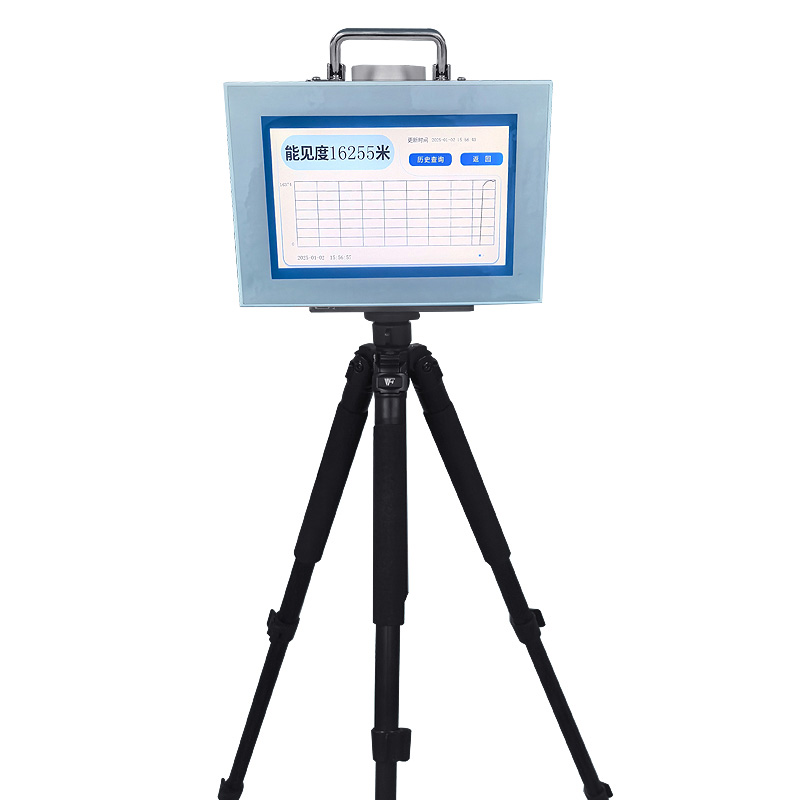Tianqiong Sensor IOT Technology Co., Ltd
Sales Manager:Ms. Emily Wang
Cel,Whatsapp,Wechat:+86 15898932201
Email:info@fengtutec.com
Add:No. 155 Optoelectronic Industry Accelerator, Gaoxin District, Weifang, Shandong, China

Sales Manager:Ms. Emily Wang
Cel,Whatsapp,Wechat:+86 15898932201
Email:info@fengtutec.com
Add:No. 155 Optoelectronic Industry Accelerator, Gaoxin District, Weifang, Shandong, China

Model:FT-BN20
Brand:tianqiong
1.Introduction to Portable Visibility detector
Portable visibility detector measures atmospheric visibility. The device does not require calibration and has a highly integrated design, making it easy to carry.The BN20 Portable visibility detector uses forward scattering method to measure the total extinction coefficient of the air and calculates the current visibility.It is widely used in emergency, road traffic, meteorological and other scenarios.
2.Technical features of Portable visibility detector
1.Integrated portable design, light weight, easy to carry, ready to use;
2.10.1-inch high-bright touch screen, displaying data and historical curves in real time; ☆
3.Built-in large-capacity SD card (8G), data is saved in real time, and it supports query and export;
4.Built-in large-capacity lithium battery, which is convenient for outdoor emergency use;
5.The instrument shell is high-quality aluminum material, and the whole machine has excellent waterproof, dustproof and collision-proof performance;
6.Built-in watchdog circuit to ensure reliable and stable outdoor operation for a long time;
7.The instrument communication and power interfaces both contain lightning protection designs, which greatly reduce lightning strikes and static damage;
8.24V power supply, low power consumption, and long-term power supply;
9.The digital interface uses RS232 and is uploaded actively without adaptation protocol;
3.Portable visibility detector execution standards
QX/T 536-2020 Forward scattering visibility meter test method
4.Portable visibility detector technical parameters
| Main parameters | Parameter range | Resolution | error | |
| Range | BN10 | 10km☆ | 1m | ≤2km ±2%2km~10km ±5%>10km ±10% |
| BN20 | 20km☆ | |||
| Repeatability | ≤4% | |||
| Operating temperature | -20~60℃ | |||
| Working humidity | 0~100%RH | |||
| Working power supply (adapter) | 100-240V input 24V output 2.5A | |||
| Power consumption | <10W | |||
| Battery capacity | 6.6AH | |||
| Working hours | ≥12h | |||
| size | 300x150x220mm (Length x Width x Height) | |||
| weight | ≤10kg | |||
The weather stations used in the agricultural field are called Agricultural Weather Stations. In order to better serve agricultural production, in addition to the conventional meteorological elements, Agricultural Weather Stations will also focus on increasing the monitoring of soil-related elements...
Under harsh low - temperature and freezing conditions, anemometers and wind vanes are highly prone to malfunction. As a result, the errors in the collected data increase significantly. Although these devices are equipped with heating units, the units only function on the rotating parts. Once severel...
In the production and use of photovoltaic modules, grid breakage is a relatively common and thorny problem. Grid breakage refers to the existence of breakpoints in the silver paste printing of the main grid of the solar cell, which causes the fine grid lines on the solar cell to be open-circuited wi...
Two - dimensional ultrasonic anemometers can only measure two parameters: wind speed and direction on the horizontal plane. They cannot obtain information about the wind in the vertical direction, such as vertical wind speed or the upward/downward speed of vertical airflows. Therefore, they are only...